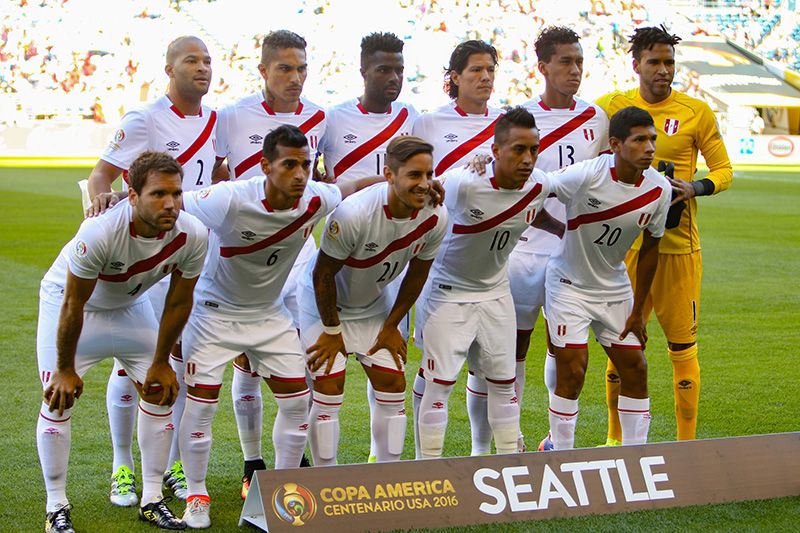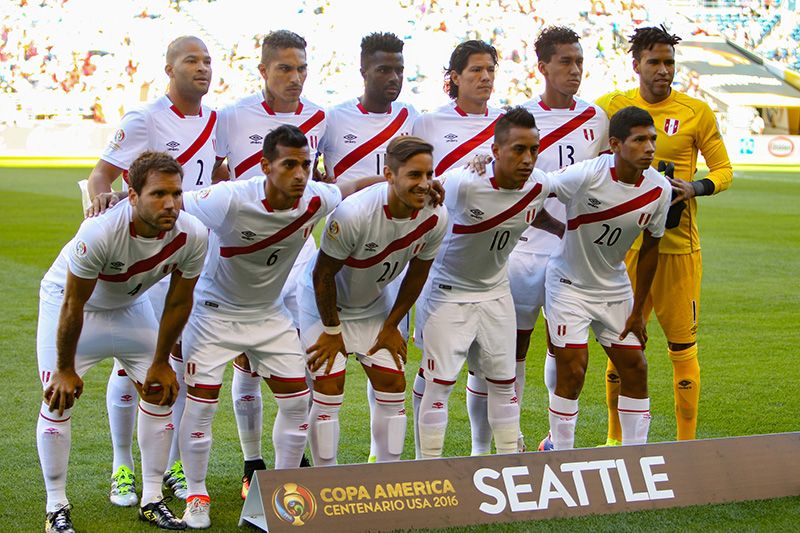Five Things to Know About Peru MNT
Before the USA takes on Peru on Tuesday in East Hartford, Conn. (7:30 p.m. ET; ESPN2, UniMas and UDN), here are five things to know about La Blanquirroja.



The U.S. Men’s National Team continues its Kickoff Series against Peru on Oct. 16 in East Hartford, Conn. at Pratt & Whitney Stadium at Rentschler Field (7:30 p.m. ET; ESPN2, UniMas, UDN). Before the USA takes on another strong South American squad, here are five things to know about La Blanquirroja.
Peru’s national team history is defined by its two most successful periods: the 1930s and 1970s. The country also stakes a contested claim to the invention of the bicycle kick in the late 1900s. Formed in 1927, the national team competed in the first FIFA World Cup in 1930 and took home the 1939 South American Championship.
After a 40-year absence (and entering the inaugural tournament by invitation), Peru fought to return to the World Cup in 1970. In dramatic fashion, Peru drew Argentina in Buenos Aires on the final matchday to secure its place and bar Argentina from the tournament for the first and only time. Two days before Peru’s first group stage game, a deadly earthquake hit the nation. Still shaken by the events at home, La Blanquirroja quickly fell behind Bulgaria 2-0, but an impassioned second half comeback saw Peru score three goals in 25 minutes to win its first match. The team qualified to the quarterfinals, marking its best-ever finish. Peru followed its World Cup success by winning the 1975 Copa America.
Following another long wait, Peru qualified for the 2018 World Cup after one of the most competitive South American qualifying processes in recent memory. Seven teams entered the final international match window vying for three direct berths and an intercontinental playoff spot. Peru ended up tied with rivals Chile for the playoff spot, but La Blanquirroja advanced on via goal difference to face New Zealand in the playoff. After earning a hard-fought scoreless draw on the road, the Peruvians scored an emphatic 2-0 win at home to earn their place at the World Cup for the first time in 36 years.
The USA’s history against Peru goes back only to 1989, a 3-0 win at the Meadowlands a few months before the U.S. qualified for the 1990 World Cup. All-time, the MNT is 3-2-1 against La Blanquirroja.
The nations have met just once in official competition- the 2000 Gold Cup, where Peru competed as a guest. A Cobi Jones goal boosted the U.S. past Peru in its first group stage game, but Peru would advance all the way to the tournament semifinals.
Their last clash came at Washington D.C.’s RFK Stadium in 2015, when a brace from Jozy Altidore led the USA to a 2-1 comeback victory. Eight current Peruvian players faced the U.S. in that match, while John Brooks, Brad Guzan, Bobby Wood and DeAndre Yedlin return from that MNT squad.
Peru’s 36-year World Cup drought was the longest among the tournament field this summer. Drawn into a difficult group, the Peruvians dropped their first two group stage matches against Denmark and eventual champion France.
Buoyed by an energetic fan base for its entire stay in Russia, Peru finally gave its supporters something to cheer about in its final match against Australia, a 2-0 win. Andre Carillo and captain Paolo Guerrero scored goals that whipped the crowd into a frenzy, despite Peru’s elimination.
Peru followed up its World Cup campaign with two friendlies in Europe during the Sept. international window. La Blanquirroja took early leads against the Netherlands and Germany, but dropped both matches 2-1 to the home countries.
Manager Ricardo Gareca has brought back most of his World Cup squad to face the USA in Connecticut, as 16 current call-ups were part of the World Cup team. Forward Jefferson Farfan leads the roster with 88 caps and 25 goals.
Peru’s 22 players ply their trade in 12 different countries, led by five playing domestically. Four currently compete in Major League Soccer: forwards Raúl Ruidíaz (Seattle Sounders FC) and Yordy Reyna (Vancouver Whitecaps FC) as well as midfielders Andy Polo (Portland Timbers) and Yoshimar Yotún (Orlando City SC).
During their first match of the international window on Friday, Oct. 12, Peru defeated Chile 3-0 in Miami. Following a scoreless first half, a Chilean own goal opened the scoring before Pedro Aquino tallied twice to give Peru its first win of the new cycle. La Blanquirroja fell my matching 2-1 score lines away to Netherlands and Germany to begin the cycle last month.
Peru Roster (Club; Caps/Goals) - Updated through Oct. 12, 2018
GOALKEEPERS (3): Patricio Álvarez (Sporting Cristal; 0/0), José Carvallo (Universidad Técnica de Cajamarca; 6/0), Pedro Gallese (Veracruz/MEX; 45/0)
DEFENDERS (8): Luis Abram (Vélez Sarsfield/ARG; 5/0), Luis Advíncula (Rayo Vallecano/ESP; 72/1), Miguel Araujo (Talleres/ARG; 9/0), Nilson Loyola (Melgar; 5/0), Johan Madrid (Sporting Cristal; 0/0), Christian Ramos (Al-Nassr/KSA; 73/3), Anderson Santamaría (Puebla/MEX; 11/0), Miguel Trauco (Flamengo/BRA; 33/0)
MIDFIELDERS (10): Pedro Aquino (Club León/MEX; 18/3), Cristian Benevente (Royal Charleroi/BEL; 16/2), Horacio Calcaterra (Sporting Cristal; 3/0), André Carillo (Al-Hilal/KSA; 52/6), Christian Cueva (Krasnodar/RUS; 52/8), Edison Flores (Morelia/MEX; 35/9), Paolo Hurtado (Konyaspor/TUR; 35/3), Andy Polo (Portland Timbers/USA; 18/1), Renato Tapia (Feyenoord/NED; 35/3), Yoshimar Yotún (Orlando City SC/USA; 79/2)
FORWARDS (3): Jefferson Farfán (Lokomotiv Moscow/RUS; 88/25), Yordy Reyna (Vancouver Whitecaps FC/CAN; 19/2), Raúl Ruidíaz (Seattle Sounders FC/USA; 33/4)
Located in western South America, Peru possesses a rich cultural history, as well as a diverse ecology. Peru was home to the ancient Inca Empire, a kingdom that controlled most of the Andean region and a territory larger than the Romans. The Incas developed the world’s first census system and their indigenous language, Quechua, is still spoken by 13 percent of the population. But the Incas’ most striking legacy today is the lost city of Machu Picchu, one of the New Seven Wonders of the World. Located high in the Andes, the well-preserved site went undiscovered for 400 years until 1911.
Peru is defined by three distinct regions: coastal plains, Andean peaks and the Amazon Rainforest. The country is home to the world’s highest sand dune, as well as its deepest canyon, Colca Canyon, nearly twice as deep as the Grand Canyon. It’s also the habitat for a number of rare animals, like jaguars, pumas, and the 14-foot-wingspanned Giant Andean condor. More than half of the world’s alpaca population lives in Peru.